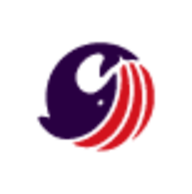

OWASP Zap and SonarQube Cloud compete in the realm of application analysis, each excelling in different areas. OWASP Zap leads in security testing efficiency, whereas SonarQube Cloud is superior in offering comprehensive code quality analysis capabilities.
Features: OWASP Zap offers automated scanning, intuitive configuration for web vulnerability testing, and API support for security automation. SonarQube Cloud provides continuous code analysis with extensive language support, integrates well with CI/CD pipelines, and delivers detailed code quality metrics for robust software development.
Room for Improvement: OWASP Zap could enhance its user interface for greater ease of use, offer more comprehensive documentation for feature utilization, and improve its false positive filtering in scans. SonarQube Cloud may benefit from better integration documentation to simplify CI/CD integration, reducing false positives, and offering more responsive customer support for large enterprises.
Ease of Deployment and Customer Service: OWASP Zap emphasizes straightforward deployment and strong community support, ensuring fast security testing setup. SonarQube Cloud provides streamlined cloud-based deployment suited for continuous integration workflows, with structured but sometimes complex customer support services.
Pricing and ROI: OWASP Zap is highly cost-effective, being open-source, providing excellent ROI for security testing with no setup costs. SonarQube Cloud, while requiring an investment through subscription plans, justifies costs with advanced features enhancing code quality, thus ensuring significant ROI for businesses prioritizing software quality assurance.


OWASP Zap is a free and open-source web application security scanner.
The solution helps developers identify vulnerabilities in their web applications by actively scanning for common security issues.
With its user-friendly interface and powerful features, Zap is a popular choice among developers for ensuring the security of their web applications.
SonarQube Cloud offers static code analysis and application security testing, seamlessly integrating into CI/CD pipelines. It's a vital tool for identifying vulnerabilities and ensuring code quality before deployment.
SonarQube Cloud is widely used for its ability to integrate with tools like GitHub, Jenkins, and Bitbucket, providing critical feedback at the pull request level. It's designed to help organizations maintain clean code by acting as a quality gate. This service supports development methodologies including sprints and Kanban for ongoing vulnerability management. While appreciated for its dashboard and integration capabilities, some users find initial setup challenging and note the need for enhanced documentation. The recent addition of mono reports and microservices support offers deeper insights into security and code quality, though container testing limitations and false positives are noted drawbacks. Manual intervention is sometimes required to address detailed reporting, with external tools being necessary for comprehensive analysis. Notifications for larger teams during serious issues and streamlined integration of new features are also areas of improvement.
What are the key features of SonarQube Cloud?In specific industries, SonarQube Cloud finds application in finance and healthcare where code integrity and security are paramount. It allows teams to identify critical vulnerabilities early and ensures that software development aligns with industry regulations and standards. By continuously analyzing code, it aids organizations in deploying secure and reliable applications, fostering trust and compliance.
We monitor all Static Application Security Testing (SAST) reviews to prevent fraudulent reviews and keep review quality high. We do not post reviews by company employees or direct competitors. We validate each review for authenticity via cross-reference with LinkedIn, and personal follow-up with the reviewer when necessary.